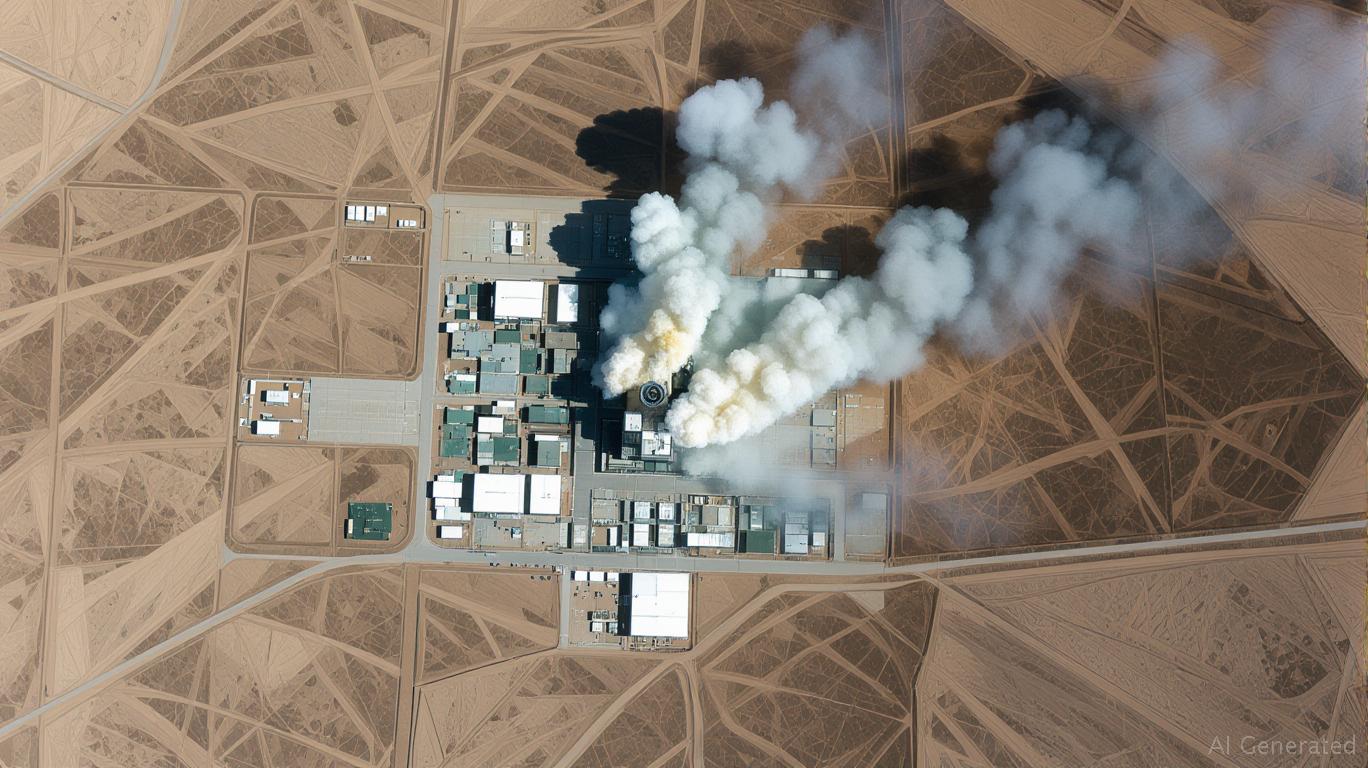The escalating conflict between Iran and its adversaries—marked by U.S./Israeli military strikes on nuclear facilities and Tehran’s suspension of IAEA cooperation—has thrust the uranium market into uncharted geopolitical waters. With Iran’s nuclear program under sustained assault and its ability to monitor and verify activities now in doubt, the stage is set for a supply shock that could send uranium prices soaring. For investors, this volatile dynamic presents a rare opportunity to position in uranium equities and ETFs ahead of a potential crisis.

Geopolitical Catalysts: From Strikes to Blackouts
The timeline of events since June 2025 paints a picture of escalating tensions. After the IAEA declared Iran in non-compliance with safeguards on June 12, U.S. and Israeli strikes crippled key nuclear sites like Natanz and Fordo. Iran retaliated by suspending IAEA inspections on June 25, effectively blacking out critical data on its uranium stockpiles and enrichment progress. This move not only risks accelerating Iran’s nuclear ambitions but also undermines the global non-proliferation framework, creating a vacuum of transparency that could destabilize uranium markets.
The geopolitical stakes are high. Iran’s hardline government has framed the strikes as an existential threat, while Western powers view the IAEA’s suspension as a deliberate evasion of accountability. The resulting uncertainty—over Iran’s uranium production, potential sanctions on other suppliers, or retaliatory actions—has already begun to ripple through commodities markets.
Supply Chain Risks: The Iran Factor and Beyond
Iran’s uranium output is relatively small compared to global producers like Kazakhstan (which accounts for ~40% of production) or Canada. However, the conflict’s broader implications could disrupt supply chains in two critical ways:
Direct Damage to Infrastructure: Strikes on enrichment sites like Natanz, which houses over 5,000 centrifuges, have likely slowed Iran’s production capacity. Even if Tehran’s program resumes, the physical destruction creates a long-term drag on output.
Secondary Sanctions Risks: The U.S. has historically used sanctions to cut off Iranian exports, but the current conflict could extend pressure to other uranium-rich nations. For instance, if Russia—a major uranium exporter—is further sanctioned over its ties to Iran, global supply could tighten.
Market Dynamics: Why Prices Are Poised to Rise
The uranium market is already in a structural deficit. Pre-2025, prices hovered around $40/lb, but geopolitical risks and rising demand for nuclear energy (as a low-carbon alternative) have pushed expectations higher. Here’s why the Iran crisis could accelerate this trend:
Investor Fear Premium: Uncertainty over Iran’s program and the IAEA’s ability to monitor it could lead utilities to overpay for reliable uranium, fearing a future shortage.
Geopolitical Diversification: Utilities may prioritize suppliers from politically stable countries like Canada (Cameco) or Kazakhstan (Kazatomprom), driving up demand for their production.
Military Demand: A prolonged standoff could spur nations to invest in nuclear deterrence, indirectly boosting uranium’s strategic value.
Investment Opportunities: Mining Stocks and ETFs to Watch
The uranium sector is poised to benefit from these dynamics. Key plays include:
Cameco (CCJ): The largest North American uranium producer, Cameco’s McArthur River mine in Canada is a critical supplier to global utilities. With a market cap of ~$1.5B, its stock has underperformed in recent years but could see a surge if prices climb above $50/lb.
Kazatomprom: The state-owned Kazakh giant controls ~20% of global uranium output. Its stability and scale make it a low-risk bet on rising prices. Investors can access it through ETFs like the Global X Uranium ETF (URA), which holds a basket of uranium miners and has surged 30% year-to-date.
ETF Plays: The URA ETF offers broad exposure and liquidity. With a 1.15% expense ratio, it’s a cost-effective way to bet on the sector without stock-specific risks.
Risks to ConsiderConflict Resolution: A diplomatic breakthrough could ease tensions and reduce the urgency for uranium price spikes.Nuclear Proliferation: If Iran’s program accelerates unchecked, it could prompt stricter sanctions on producers, complicating supply chains.Market Overhang: Glut from Russia’s state-owned stocks or delayed reactor startups could cap price gains.Conclusion: Position for a Geopolitical Tailwind
The Iran-U.S./Israel conflict has created a unique convergence of geopolitical risk and commodity fundamentals. With uranium prices at a critical inflection point and mining stocks undervalued relative to their upside, now is the time to build a position in URA or leading equities. While risks remain, the catalysts for a supply shock—damaged infrastructure, IAEA blackouts, and escalating tensions—are too powerful to ignore. For investors with a long-term horizon, this could be the start of a multi-year uranium bull market.